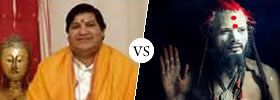Difference between Mumbai and Bombay
Key difference: Mumbai is the new localized name of Bombay.
 Mumbai is the new localized name for the city of Bombay. It is the largest city in India, in terms of population and it the fourth most populous city in the world. It is the capital city of the Indian state of Maharashtra and the financial capital of India. The metropolitan area population of Mumbai totals to approximately 20.5 million.
Mumbai is the new localized name for the city of Bombay. It is the largest city in India, in terms of population and it the fourth most populous city in the world. It is the capital city of the Indian state of Maharashtra and the financial capital of India. The metropolitan area population of Mumbai totals to approximately 20.5 million.
Mumbai is the wealthiest city in India and with its neighboring cities of Navi Mumbai and Thane is one of the most populous urban regions in the world. Mumbai is located on the west coast of India and has a natural deep harbor, which is how it got its previous name Bombay.
The area of Mumbai was habituated since the Stone Age; however the earliest known history of the area dates back to settling of the area by the Kolis, a marathi fishing community. After this the Maurya Empire gained control of the area during the 3rd century BCE, and transformed it into a centre of Hindu and Buddhist culture and religion. This started an era of various kingdoms and regencies ruling the area, until 1534 when under the Treaty of Bassein between the Portuguese viceroy Nuno da Cunha and Bahadur Shah of the Gujarat Sultanate, the then ruler, placed the area under Portuguese control. The Portuguese called the area as Bombaim, as named by the Portuguese writer Gaspar Correia in 1508.
‘Bombaim’ originated as the Old Portuguese phrase bom baim, meaning ‘good little bay’, referring to the natural deep harbors of the area. They area was also referred to by other less popular names during the 16th and the 17th centuries, such as Mombayn, Bombay, Bombain, Bombaym, Monbaym, Mombaim, Mombaym, Bambaye, Bombaiim, Bombeye, and Boon Bay.
Eventually Charles II of England received possession of the islands in 1661 as part of the dowry from his marriage to Catherine of Braganza, daughter of King John IV of Portugal. Charles then went on to lease the area to the East India Company in 1668. During this period, the city emerged as an important trading town and became a highly valued post for the East India Company. Due to British domination, the city was eventually renamed ‘Bombay’, an anglicized name of ‘Bombaim.’
During the early 20th century, Bombay became a strong base for the Indian independence movement. After India's independence in 1947, the territory of Mumbai Presidency was restructured into Mumbai State, which was eventually incorporated into the newly created Maharashtra State in 1960.
After independence, India sought to assert its legacy, which had been long oppressed by the British, over the tarnished legacy of their oppressors. One of the ways they sought to do this was by renaming all the local landmarks and cities in their original native tongue. This also aimed to assert the dominance of the local language over the language of the oppressors, i.e. English. Hence, in 1996, the name of ‘Bombay’ was officially changed to ‘Mumbai.’ The name of a number of landmarks in the city were also changed, including the name of Victoria Terminus to Chhatrapati Shivaji Terminus, which is now a UNESCO World Heritage Site, the name of Sahara Airport to Chhatrapati Shivaji International Airport, Prince of Wales Museum of Western India to Chhatrapati Shivaji Maharaj Vastu Sangrahalaya, Victoria Gardens to Jijamata Udyaan, etc.
The name ‘Mumbai’ was derived from Mumba or Maha-Amba, which was the name of the patron goddess of the Kolis, Mumbadevi, and ‘Aai,’ which means ‘mother’ in the local language of Marathi.

Currently, Mumbai is still an important trading town and a major trading centre, which has heightened its popularity calling on to people of all cultures and nationality. It is quite popular as a tourist location, due to it vast culture which has a blend of traditional festivals, food, and music, incorporating a number of vast nationalities and cultures. Mumbai has a vast cosmopolitan and diverse lifestyle with a variety of food, entertainment and night life for all ages. Mumbai is the birthplace of Indian cinema, known lovingly as Bollywood, and has a thriving ‘theatre movement’ tradition in Marathi, Hindi, English and other regional languages.
From the beginning of the 21st century, Mumbai has suffered several terrorist attacks, as well as riots, which have resulted in a loss of number of lives and property. However, this has not deterred the residents, immigrants and tourist, who continue to folk to Mumbai. Mumbai is continuing its legacy as a strong city and is constantly growing, and it doesn’t seem to have any plans to stopping any time soon.
Image Courtesy: wikimedia.org, oldphotosbombay.blogspot.in









Add new comment